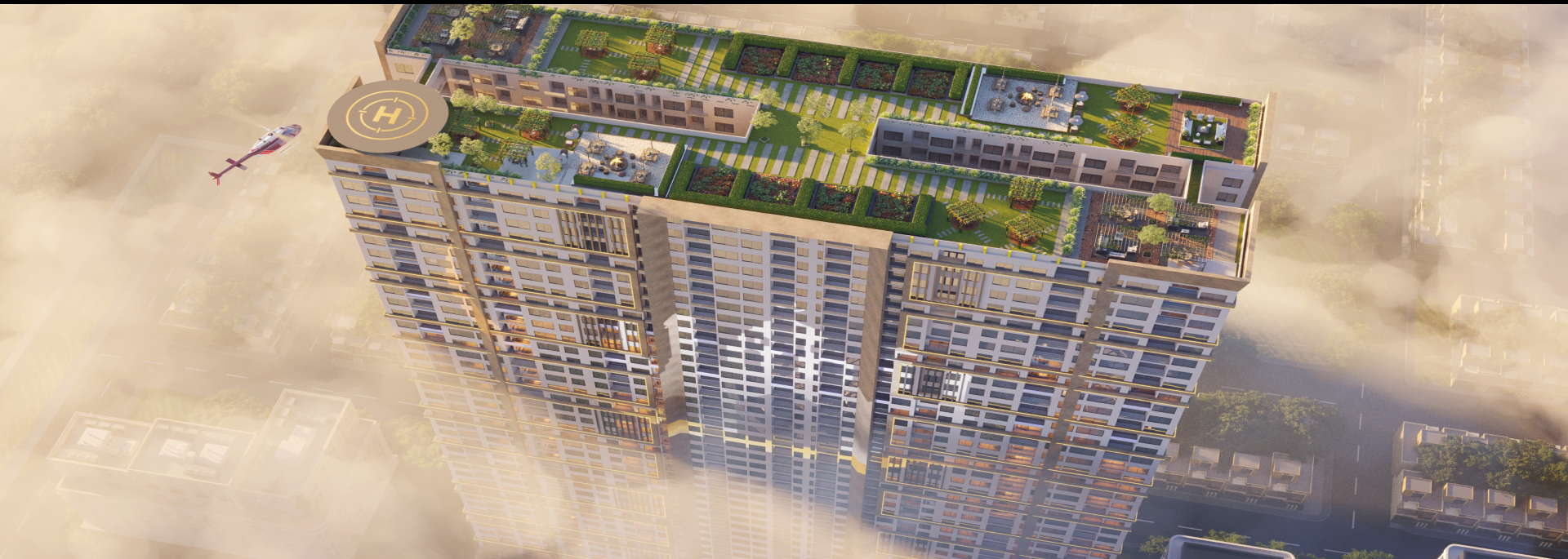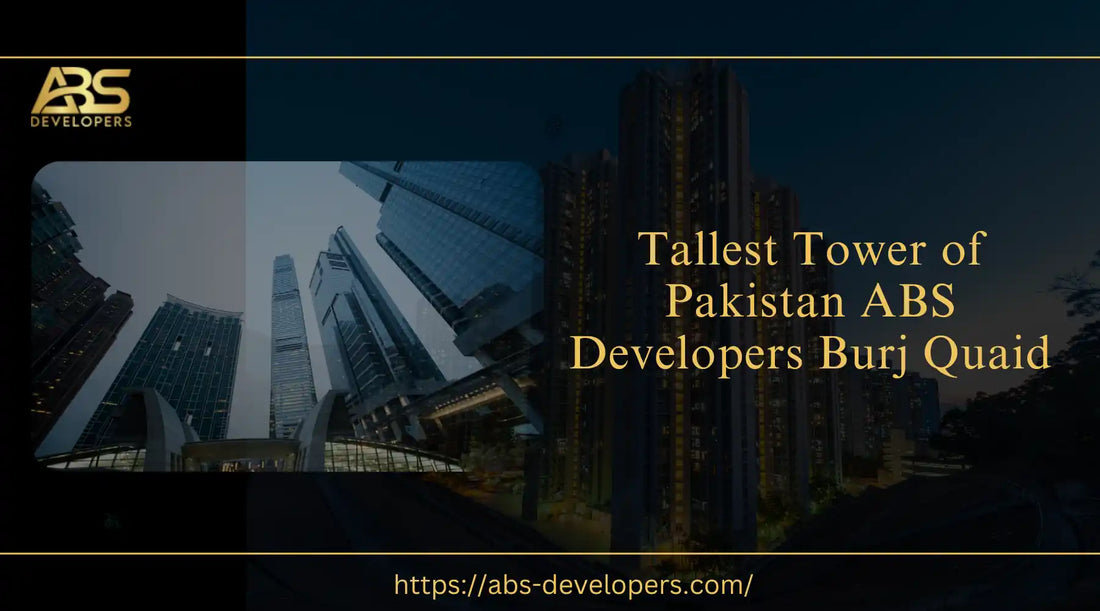Burj Quaid, developed by ABS Developers, is a skyscraper that is set to become one of the tallest in the country. The Burj Quaid, also known as the Burj Quaid-e-Azam, is not just a building; it is the pride of Pakistan and the new face of real estate. Rising to a new height, i.e., 1000+ meters and 100+ amenities, it has become Pakistan's new Landmark. No doubt, this Landmark will represent a luxury and bold vision for Karachi's skyline and Pakistan's future in modern architecture.
The idea of such a massive structure raised numerous questions.
- Who is behind this project?
- How will it compare to other global projects?
- Is it feasible for Pakistan?
- What would it mean for the country if this mega tower project succeeds?
Well, if you want to learn more about Burj Quaid, you need to read this article until the end. We’ve provided a clear and informative look at this grand proposal that everyone has been waiting for.
What Is Burj Quaid?
As the name implies, Burj Quaid pays tribute to Quaid-e-Azam Muhammad Ali Jinnah, the founder of Pakistan. The tower symbolizes national pride and progress.
Burj Quaid's design is a mixed-use development, which means it will combine residential, commercial, and hospitality spaces. Imagine a vertical city featuring luxury apartments, hotels, offices, and shopping centers, all offering breathtaking views of the Arabian Sea and the city's vibrant lights.
While Burj Quaid sets a new benchmark for vertical living in Karachi, those exploring premium apartments in Lahore can also find equally luxurious options by ABS Developers in Punjab’s capital.
The Burj Quaid will redefine Karachi's skyline and place Pakistan on the global map for its marvelous architecture.
Who Is Behind The Project?
The developers of this skyscraper are a well-known Pakistani estate and construction firm – ABS Developers. ABS (Agha Brothers & Sons) has a strong track record of leading major projects, such as Port Grand and Dolmen Malls in Karachi.
Their experience in large-scale projects makes them suitable candidates for such a massive and ambitious project. However, building a tower over 1000 meters tall presents a unique set of challenges. Not only does it require enormous funding, but it will also require years of precise construction and the use of cutting-edge engineering.
Comparing Burj Khalifa to Other Global Skyscrapers
Burj Khalifa is currently the tallest building in the world, standing at 828 meters. The Jeddah Tower, which is under construction, aims to surpass it at 1008 meters. If the Burj Quaid reaches its proposed height, it will overtake Burj Khalifa and compete with the Jeddah Tower.
Pakistan's tallest building, the Bahria Icon Tower, is only 300 meters tall. This illustrates the significant leap the Burj Quaid would represent for Pakistan's skyline.
Can ABS Really Build Burj Quaid?
Hearing about a 1000+ meter tower in Pakistan seems like exciting news, but does it sound realistic?
How is it possible
Just as the Burj Khalifa put Dubai on the global stage, the Burj Quaid serves as a symbol of national progress for Pakistan. First of all, foreign investment will play a vital role in its development. If investors from the Middle East, China, or any other countries see potential in Karachi's growth, they might fund the project. Additionally, Karachi is regarded as the most economically vibrant city in Pakistan. A skyscraper would attract tourism and global attention, significantly boosting the local economy.
Challenges For The Construction
We are all well aware that Pakistan is facing a significant economic challenge. This project would cost billions of Dollars, and securing such funding will not be easy.
Additionally, Karachi's existing infrastructure, including roads, electricity, and water supply, may hinder the massive development. However, upgrading these systems would be costly.

Do you know that if Burj Quaid is built successfully, it could have a positive impact on Pakistan's economy?
One of the top benefits would definitely be tourism. Burj Khalifa attracts millions of visitors throughout the year, and a similar structure could do the same for Karachi.
Moreover, Burj Quaid could enhance Pakistan's global image. A tall landmark would showcase that Pakistan is open for business and attract more foreign investment in other sectors.
However, if the project fails or faces long delays, it could be a financial burden. As discussed, Karachi already struggles with pollution, traffic congestion, water shortages, power outages, and overcrowding. Building a massive tower without improving the existing infrastructure could exacerbate these problems.
Final Thoughts
Burj Quaid is not just another skyscraper but a statement that symbolizes national pride. It truly represents the aim to stand among the world's advanced nations. The idea is thrilling, but the path that leads to the final destination is full of challenges.
So, what do you think? Should Pakistan prioritize such a massive project, or should it focus on improving the existing infrastructure?
Read More : Finding Budget-Friendly Family Apartments in Lahore

